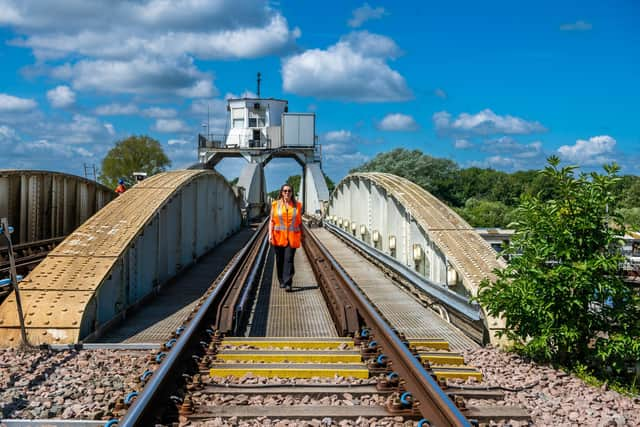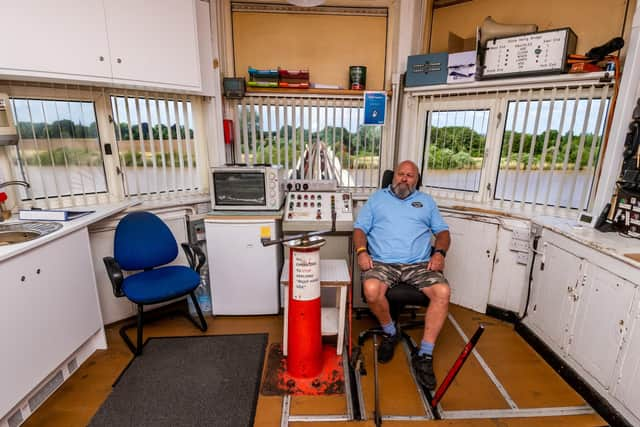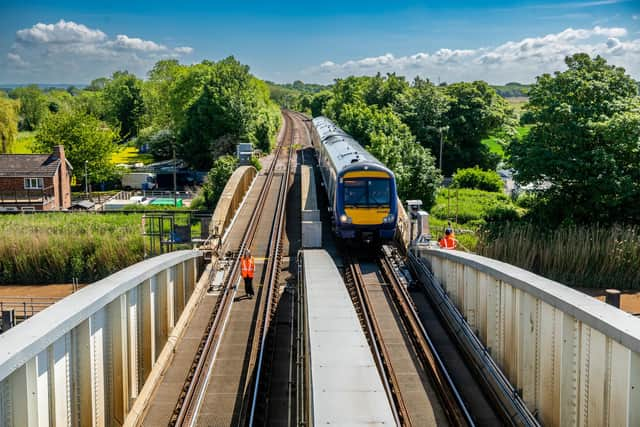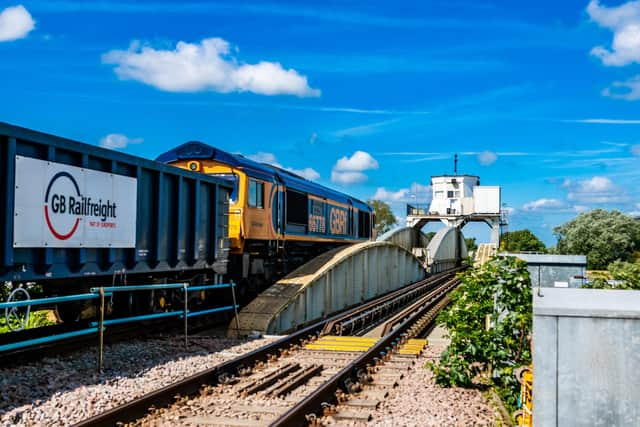Goole Swing Bridge: Meet the staff who operate one of Yorkshire's oldest railway structures - who deal with ships and trains at the same time
The 36-year-old is the first woman to hold the role ever since the bridge opened in 1869 to carry the railway line between Hull and Doncaster over the River Ouse, then a busy shipping route.
June marks a significant moment in the history of the structure, the only one in the Network Rail estate which handles both rail and maritime traffic simultaneously. A major upgrade of the bridge will begin, making it fit for the demands of the 21st century.
Advertisement
Hide AdAdvertisement
Hide AdGoole Swing Bridge is a perhaps surprising survivor – it has been Grade II-listed since 1987, but narrowly avoided being dismantled by British Rail, who at one point favoured closing the entire section of the line due to costly repair bills after a number of collisions between vessels and spans in the 1970s and 80s.


It was closed for nine months in 1973, after a German coaster struck the bridge and one of the spans fell into the river. In 1976, there was another strike, this time a Danish vessel hitting a pier. In 1988, a span was pushed out of alignment by a Swedish ship which then became trapped. Between 1981 and 1991, there were over 20 collisions. The most recent was in 2008, when a German vessel carrying timber from Sweden made contact with the bridge.
Today, improvements in technology and communication with shipping meaning there have been no incidents in the decade Kelly has been in post. The bridge’s staff, who have a signalling background, are trained in the use of maritime radio channels and experts at directing captains to the safest approaches.
Usage, too, has changed in Kelly’s time, reflecting in part transformation of the area’s industrial landscape. Vessels passing beneath the Swing Bridge are using the port facilities at Howdendyke, which these days handles mainly agricultural and aggregates cargos that have traversed the Humber.
Advertisement
Hide AdAdvertisement
Hide Ad"The frequency for commercial vessels is only around two a week now. In the summer it is busier because of pleasure craft. The ships carry all sorts – cement, ballast, nitrate. They’ve come from the North Sea and European ports.


"The rail traffic is four passenger trains per hour, but freight has really declined in the past 10 years and is now very sparse. The line was built for coal trains, but there’s none of that now.”
Kelly herself manned signal boxes before transferring to the Swing Bridge, having started out as a level crossing keeper 16 years ago.
"I really fancied the job, but walking across the water was my biggest fear at first!
Advertisement
Hide AdAdvertisement
Hide Ad"The main challenge of operating the Swing Bridge is when it breaks. It needs a lot of maintenance, and we try not to delay trains, but sometimes it has to happen. It’s over 150 years old, and some of the original system is still in place. The signal cabin still looks Victorian.


"We haven’t had so much as a glancing blow in the 10 years I’ve been here, but with our radio training, we can give direct instructions to ships about the best channels to use.”
The upgrade work will involve replacement of key parts of the structure, meaning some closures for the line.
"People often don’t even know where the Swing Bridge is. We are slap bang between Skelton and Hook, so we often get referred to by the wrong name.
Advertisement
Hide AdAdvertisement
Hide Ad"The Swing Bridge is very different to working in signal boxes. It can be 24/7, a vessel can come at any time. I’ve worked Christmas Day before, but I really didn’t mind. It was lovely and peaceful, I was alone in the middle of nowhere!


"It is one of Network Rail’s oldest signalling structures, and I’ve loved working here. I wanted to move after I had my first child, when my life had gone from slow to fast-paced. It’s a job for life and I have no plans to leave.”
